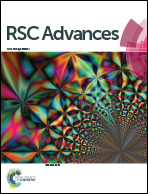Use of CS–PAA nanoparticles as an alternative to metal oxide nanoparticles and their effect on fouling mitigation of a PSF ultrafiltration membrane
Abstract
This study deals with the synthesis and characterization of cross linked chitosan polyacrylic acid (CS–PAA) nanoparticles. Phase inversion method was used to prepare the blended polysulfone (PSF) membranes with CS–PAA nanoparticles. Field emission scanning electron microscopy (FESEM) and attenuated total reflectance-Fourier transform infrared spectroscopy (ATR-FTIR) measurements were performed to confirm the presence and dispersion of the CS–PAA nanoparticles in the blended membranes. Modified membranes exhibited superior pore size, pure water flux, hydraulic permeability and fouling resistance compared to the plain membrane. Morphology of the modified membranes was changed noticeably with an increased quantity of nanoparticles. Hydrophilicity and fouling resistance behaviour of the fabricated membranes were evaluated in terms of water contact angle and BSA adsorption, respectively. Hydraulic permeability was also determined and it was improved from 0.146 L m−2 h−1 kPa to 0.265 L m−2 h−1 kPa for the modified membrane compared to the plain membrane. Fouling resistance performance of the modified membrane was estimated by ultrafiltration (UF) of 1000 ppm Bovine serum albumin (BSA) solution. BSA flux was improved from 8.3 to 24.3 L m−2 h−1 for modified membranes. The modified membrane reached a maximum flux recovery ratio of around 88% after the BSA UF experiment compared to a 42% flux recovery ratio of the plain membrane.


 Please wait while we load your content...
Please wait while we load your content...